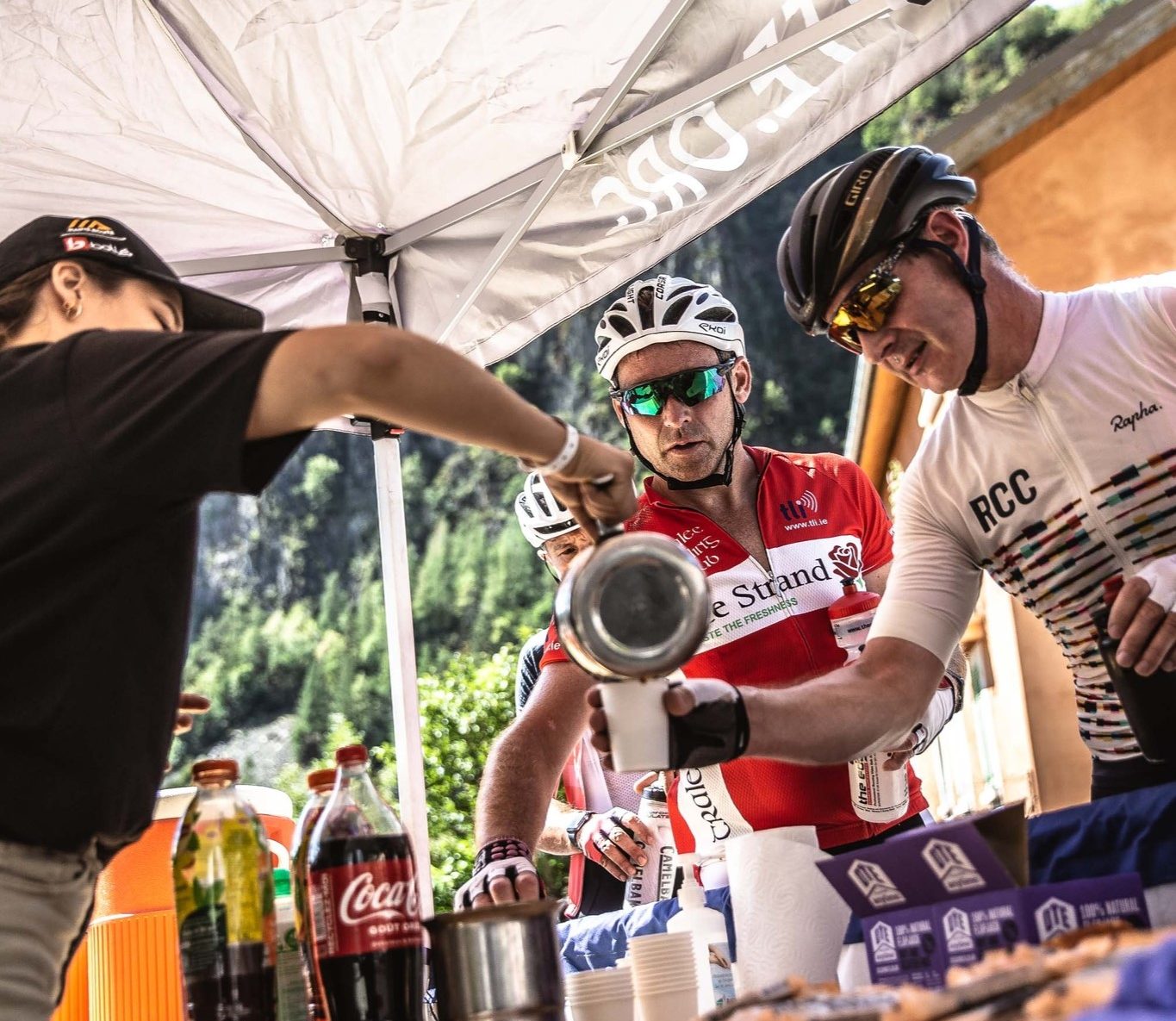5 tips for fueling your Haute Route Journey

The work that you do on the bike is fundamentally important to your training success. However we can only ride our bikes and recover, from the fuel that we put into our bodies. Just like your car, if you forget to fill it up (or charge it), it will break down, leaving you stranded.
Joe Staunton is a cycling coach and performance nutritionist at Ceyreste Performance.
‘Once you know how to plan your training, the second biggest thing you should be nailing is ensuring your diet is sufficient to sustain your training load; to fuel your workouts and recover from them. If you fail to get this right, you are unlikely to achieve your training goals and risk getting sick, injured or experiencing overtraining syndrome’.
Here are five tips for planning your nutrition to get you in tip-top shape for the Haute Route.
- Plan to perfect
Don’t leave your nutrition to chance. Hard and long endurance sessions can drain your body’s glycogen stores (how the body stores carbohydrates for energy) and divert a lot of resources away from the things your body needs to just be able to get out of bed in the morning (such as keeping your brain functioning or growing new hair and skin). Make some time to sit down and plan how you will achieve your fuelling demands to ensure you are healthy and able to both smash and recover from your training sessions.
- How much
Endurance exercise burns a lot of fuel. A Tour de France rider may burn more calories in a single day than a normal person would in 3 days. You will need to eat a lot more than your non cycling friends and family whilst preparing for the Haute Route.
So that fueling isn’t a stab in the dark, you need to try and work out roughly what your daily energy requirements are, and then how many additional kcals you are burning in your training on top of that. It can be very difficult if you are doing a mixture of high intensity training and endurance riding to just trust your hunger levels, as some forms of exercise can suppress appetite. And training sessions can have dramatically different energy requirements. Some sessions may burn only 400kcal and some may burn 4000kcal. ‘Fuel for the work required’ is a phrase used a lot in sports nutrition and means that if something is going to use a lot of energy, you need to make sure you put a lot of energy in; you wouldn’t eat the same amount on a recovery day vs your biggest and hardest training day for example. You should aim to at least match your energy requirements, and in the hardest training phases be slightly over as hard training uses extra energy to recover from and adapt to (1).
- What to eat
There is often confusion around sports nutrition in the difference between foods required for a healthy athlete and a high performing one. To be a high performing athlete you must firstly be healthy, as you cannot train hard if you are sick, injured or malnourished. A healthy athlete requires the same kinds of foods as any other human being to be healthy, a varied diet containing lots of wholefoods, fruit, vegetables and high quality proteins;
However these fibrous foods are often not the ones that your body needs to perform optimally in your hardest sessions or races. When it comes down to performing at your best, we need to make things easy for our guts, which means simplifying what we eat. For cycling performance, this means giving the body simple easily digestible carbohydrates with regular small portions of protein. Some may find this better news than others, but vegetables won’t help you immediately before a race! (2).
- Timing
Once you know how much and of what food you should be eating, it is time to think about when. Timing your fuelling correctly can be the difference between feeling like you are full of energy, or feeling sluggish, sick and fatigued.
A main meal before a training session should be taken on between 2-4 hours beforehand and should be full of easily digestible carbohydrates. You should then have a high carbohydrate snack 10-15 minutes prior to your session followed by carbs within the session if it is any longer than 30 minutes (3). Carbs are then the immediate priority within 30 minutes -1 hour after your session, followed by a balanced meal with a quality protein source. The correct post training timings stimulate hormones that kick start the recovery process so that you are already ahead on your next session.
- Practice your event nutrition
Long days in the saddle like the Haute Route require variety and forethought. Start experimenting with different foods that you can eat whilst you are riding. Portable, easy-to-digest options like gels, dried fruits, and rice cakes will fuel you and prevent energy lows and aid post ride recovery (4). We’d recommend trying a mix of sweet and savory snacks to keep your taste buds happy throughout the race. It may be hard to believe but palate fatigue is a real thing!
Enjoyed these tips? Follow @ceyresteperformance for more training tips and tricks or get in touch with Joe@ceyresteperformance.com for training help.
REFERENCES:
1 – Maughan RJ, Burke LM, Dvorak J, et al. IOC consensus statement: dietary supplements and the high-performance athleteBritish Journal of Sports Medicine 2018;52:439-455.
2 – Burke, L. M. (2016). The complete guide to food for sports performance: Peak nutrition for your sport. Allen & Unwin.
3 – https://www.mysportscience.com/post/2015/05/27/recommendations-for-carb-intake-during-exercise
4 – Jeukendrup, A. E. (2014). A step towards personalized sports nutrition: carbohydrate intake during exercise. Sports Medicine, 44(Suppl 1), 25–33.

 Français
Français